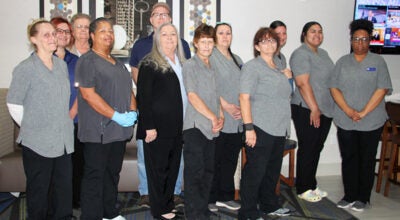Be aware during lightning
Published 12:03 am Friday, June 26, 2015
Each year nearly 50 people are struck by lightning.
The National Weather Service this week recognizes lightning safety awareness week, and the week may have more significance locally after two people were struck and killed this week.
An Opp couple was found dead in their West Hart Avenue backyard Wednesday, and were identified yesterday as Sharon Fletcher and Miguel Belnar
This year 11 people have been killed in the United States due to lightning.
The other nine deaths have occurred in North Carolina, Iowa, Florida, New Mexico, West Virginia and Arkansas.
Activities include walking dogs, waiting for friends, rounding up cattle, roofing, riding a motorcycle, fishing, walking and camping.
John Jensenius, a lightning safety specialist for the National Weather Service conducted a study by examining demographic information for 238 death over seven years.
Of the 152 deaths associated with leisure activities, fishing topped the list at 26 deaths.
Also on the list were:
• camping at 15 deaths;
• boating at 14 deaths;
• soccer at 12 deaths;
• golf at eight deaths
The others were swimming, enjoying the beach, walking and running and more.
“When people think of lightning deaths, the usually think of golf,” Jensenius said. “While every outdoor activity is dangerous when a thunderstorm is in the area, outdoor activities other than golf lead to more lightning deaths.”
Jensenius said the large number of fishing, camping and boating deaths may occur because it takes extra time to get to a safe place.
“People often wait far too long to head to safety when a storm is approaching, and that puts them in a dangerous and potentially deadly situation.”
Here are a few tips:
• There is no safe place outside in a thunderstorm;
• The only way to significantly reduce your risk of becoming a lightning casualty is to get inside a substantial building or hard-topped metal vehicle as fast as you can;
• Avoid open areas. Don’t be the tallest object in the area;
• Stay away from isolated tall trees, towers or utility poles. Lightning tends to strike the taller objects in an area;
• Stay away from metal conductors such as wires or fences. Metal does not attract lightning, but lightning can travel long distance through it.
If some is struck by lightning, act quickly.
• Lightning victims do not carry an electrical charge, are safe to touch, and need urgent medical attention;
• Call 9-1-1.
• Give first aid. If the person is unresponsive or not breathing, don’t delay CPR.





